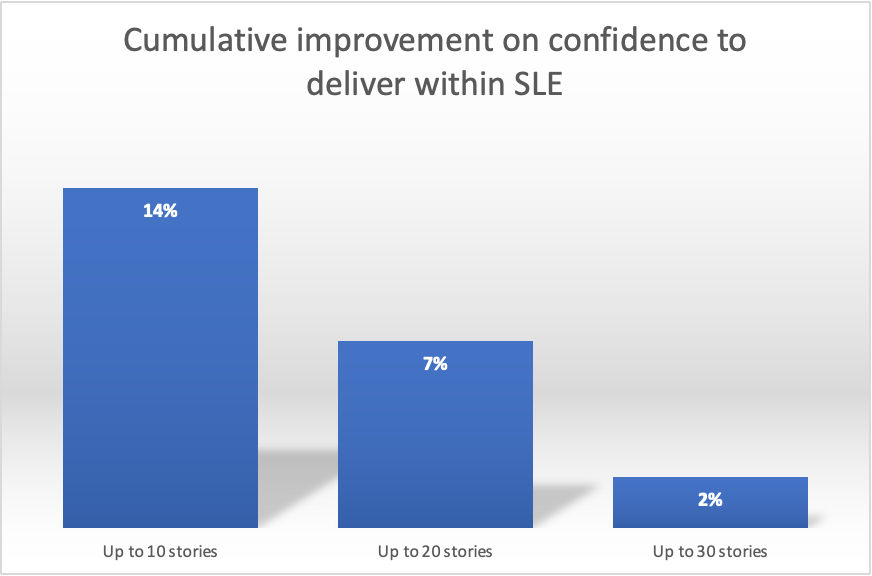Right-sizing: how the heck...
Here's an insight that the more I think about it, the more it resonates with me:
(Work item) aging is the symptom. The “how the heck can I do something about it”, from a product management standpoint, is the idea of “right-sizing”.
I have made the case before for faster flow and right-sizing here, as a means to de-risk the chances of work that has been started to be stopped (for change in context or whatever reason). And this piece in fact feels a lot like a sequel or a spin-off of sorts of the two-part series that preceded it. There I eventually (in the second part) defined the pragmatic "controllable inputs" for (faster) flow with one being precisely right-sizing.
I'm guessing you may be thinking – all good and well in principle and theory, but how the heck do I actually do it. And what kind of prove you can point out to. Because as Deming has famously said:
In God we trust, all others must bring data.
This is what I once found as I dug into trying to find patterns of what could contribute to a deliverable ("team portfolio" level, in our context we called them epics) and how often our cycle time would be within the SLE (service level expectation):
You may be thinking – alright, no big deal, there's nothing counterintuitive there, the bigger the scope, the longer it may take. But that's not quite the point, but rather this:
We all intuitively know about this stuff. We don't seem to be as deliberate though as using that intuition to do something practical about using the implied idea, of right-sizing, as a means to improve delivery (cycle) times.
By the way, the equivalent notion at more tactical level (like storie flowing through your delivery process) might be as easy as a team having a conversation and contrasting that to what they typically expect or observe in their cycle times as well. Let's imagine a team observes, with 80% (percentile) confidence that story cycle time is below 10 days. And that seems like a reasonable reference as far as the team can tell of what users expect.
Do we believe this specific story will flow through our process in 10 days or less? If not confident enough, let's right-size it so that we can say YES to that question.
Here's a somewhat fine-print, yet quite relevant, point though: notice the nuance of the "-ing" in the end. It's not "right-sized" but "right-sizing". It's more than semantics.
The pro-version is to pick on the that detail that matter. It’s not an one-off activity: it’s a way of thinking and acting in motion. Continuously prioritizing WIP and using right-sizing as leverage as needed.
Is the item taking longer than we thought? What are the true essentials of it to get through and put on the hands of users so that we can learn from it? At a tactical (like a story) level that is about rescoping; at more of a portfolio level (like an epic, or feature), it's about removing some stories or tasks out of it (to a possible follow up item, for instance).
How is so practically better when we can align intuition with data-informed action!
This is a simple yet (IMHO) quite powerful idea. Notice I said "simple" not easy – for as cliché as it may sound, it's much easier said than done. But it's absolutely worth the trouble. And more and more I feel inclined to say it's one of the things product managers should obsess on, at least from a pragmatic controllable inputs standpoint. Since the others like "obsess with value" or "...with customers" – and I hope you will get what I mean – are somewhat vague and not well-defined enough – perhaps we can agree they are aspirational in principle, so acting as a kind of lagging / output goal (a very laudable one in fact).
But the point is always "how the heck" we can do something about it in the now, and again and again. In ways that are both consistent and leading to be set for success. That's where I am coming from:
What can practically help to increase our chances to get our product development right (as Jeff Patton would say: maximizing impact while minimizing output), and right-sizing is quite there at the top, if you ask me.
/rant
By Rodrigo Sperb, feel free to connect, I'm happy to engage and interact. If I can be of further utility to you or your organization in getting better at working with product development, I am available for part-time advisory, consulting or contract-based engagements.

